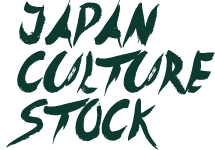












¥27,800
 色やサイズなどを指定して注文
色やサイズなどを指定して注文
Category
Toys/hobbies/goods
toy
Character Goods
commodity condition
There is no noticeable scratches or dirt
Burden of shipping charges
Shipping included (paid by seller)
Shipping method
Easy Mercari delivery
anonymous delivery
Region of origin
to be decided
Number of days until shipping
Ships in 1-2 days
From the early to mid-Meiji period, the bustle style, in which the waist area was extremely puffed out, was the social wear of upper-class Japanese women.
The era of the so-called "Rokumeikan style" passed away.
The theme seems to be the fashion of Western women from the 1900s to the 1940s.
To specifically list the characteristics of each age group...
[00s]
The ``S-curve silhouette'' (bee-waist style), in which the waist is tightened with a corset and the hips protrude, is trending.
The skirt has a ``flare cut'' that naturally spreads toward the hem, taking advantage of the feminine line of the waist.
It still smells like the old days.
[10's]
The ``hobble skirt'', which has a neatly tapered silhouette from the knee down, is popular.
Hobble means "awkward."
The name seems to come from the fact that the way they walk while wearing this skirt resembles that of a toddler.
Fur gowns were also said to be a boom.
[20's]
The design style shifted from Art Nouveau, which was dominated by curves, to Art Deco, which was linear and three-dimensional.
Along with this, women's fashion also changed to linear and simple silhouettes.
A straight knee-length dress with short bob hair that doesn't tighten at the waist.
It's called "flapper style."
It was also during this period that the term ``garconne'' (a girl who looks like a boy) was coined.
[30's]
Perhaps as a reaction to the 1920s, in the 1930s, ``femininity'' was once again sought after in fashion.
Skirts are long and dresses that follow the contours of the body are popular.
Apparently people liked the ``halter neck style'' with a wide open back, and sleeves with movement such as ``puff sleeves'' and ``cape sleeves.''
[40's]
In the 1940s, the cutting edge of fashion shifted from Europe to America.
It has a narrow waist and a large neckline, and the skirt is calf length (calf length).
The style of layering a petticoat underneath has become fashionable.
This series faithfully reproduces the above characteristics.
1900, 20's
When you press it, there will be a little space at the bottom.
30's product
There is a little writing on the barcode with a magic marker.
There is a little yellowing on the fur.
Since this is a vintage item, please refrain from purchasing if you are sensitive.
Please feel free to comment if you have any pictures.
当社はクッキーを使用してコンテンツや広告をパーソナライズし、ソーシャルメディアの機能を提供し、トラフィックを分析します。また、当社のウェブサイトを利用した情報を、ソーシャルメディア、広告、分析パートナーと共有します。